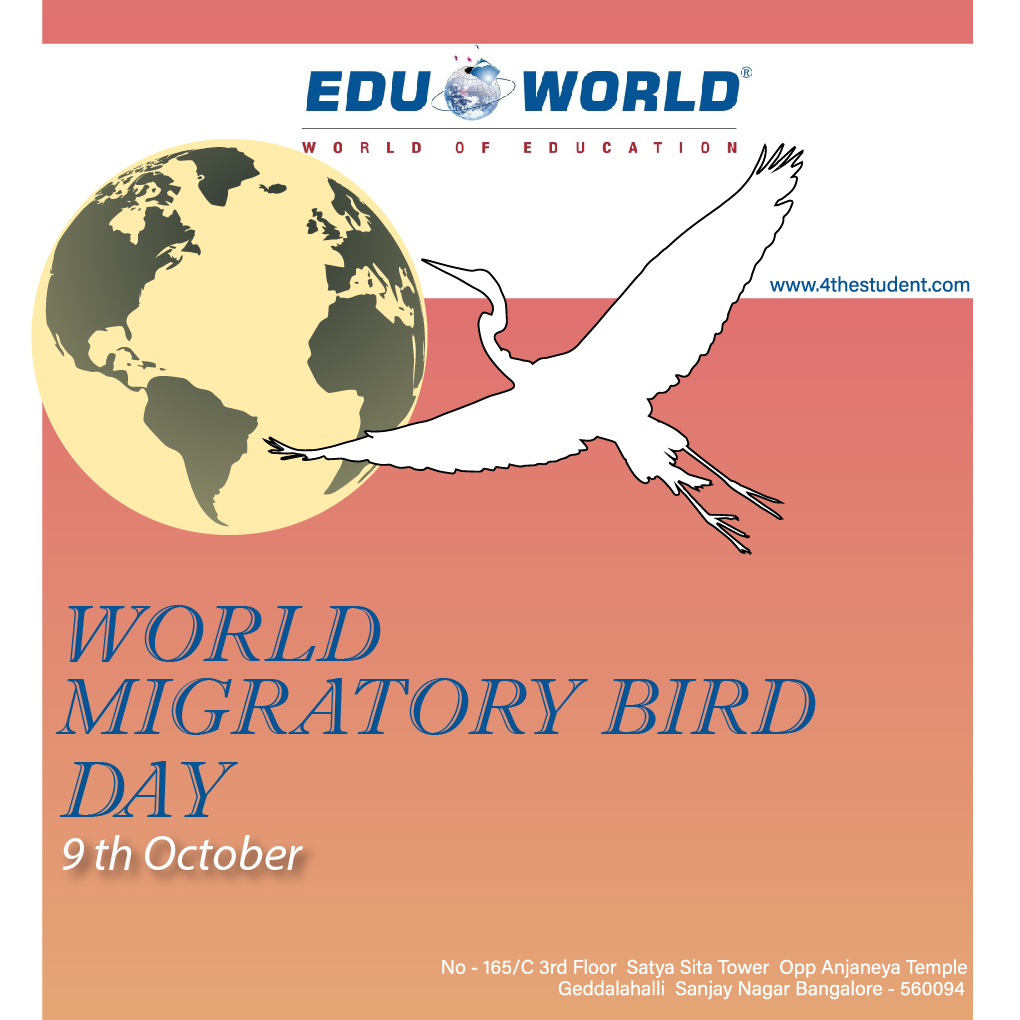The annual World Migrating Bird Day (WMBD) campaign, which was started in 2006, raises awareness of the need to protect migratory birds and their habitats. On the second weekend in May each year. A miracle of nature is avian migration. The greatest ecological settings and habitats for feeding, mating, and raising their young can be found by migratory birds over distances of hundreds or even thousands of kilometres. When breeding places experience unfavourable conditions, it is time to travel to areas with better weather. There are numerous variations of migration patterns. Most birds make the journey from their northern breeding habitats to their southern wintering grounds. To take advantage of the milder coastal temperatures in winter, some birds nest in southern Africa and migrate to northern wintering grounds or horizontally. Other birds spend the winter in lowlands and migrate to mountains in the summer. Birds that migrate have the ideal anatomy and physiology for flying quickly and far. They frequently have a difficult trip where they push themselves to the maximum. The Red Knot travels up to 16,000 kilometres twice a year on one of the longest overall migration paths of any bird. Siberia serves as its breeding ground, and some individuals even go as far south as South Africa’s tip to spend the winter there. The ability of migratory birds to navigate with such precision is simply astonishing. It is unclear exactly how migratory birds locate their flyways. The ability to orient by the sun during the day, the stars at night, and the geomagnetic field at any time has been demonstrated. Many migratory birds may use polarised light for night time navigation, and some species can even detect it. Most migratory birds fly at night. Since a night sky often signals calmer air and fewer predators, they have been doing this for centuries. Ducks and geese, plovers and sandpipers, as well as songbirds of all varieties, are among the birds that migrate at night. The distance between their breeding and non-breeding grounds can be thousands of miles for these species.
The night sky is in danger, though. Globally, the amount of artificial light is rising by at least 2% annually, which is problematic for birds. Migrating birds are drawn to and confused by light pollution from buildings, businesses, and other infrastructure, which increases the likelihood that they may settle in hazardous or collision-prone places. Birds are also harmed by artificial light during the breeding and winter seasons, which interferes with feeding and other essential behaviours. World Migratory Bird Day, an annual international campaign that celebrates the movement of birds across nations and continents, will be focused in 2022 on the effects of light pollution. We will promote the idea of “dim the lights for birds at night” throughout the year and emphasise the actions that people, communities, and governments can take to lessen the effects of light pollution on our shared bird species. World Migratory Bird Day, which is traditionally celebrated on the second Saturdays of May and October, is actually a year-round event. The Smithsonian Migratory Bird Centre established International Migratory Bird Day in 1993 to draw attention to the need for international collaboration in the conservation of birds and their habitats. This was the beginning of the programme. Environment for the Americas has been in charge of organising the campaign across the Americas since 2007. We collaborated with the African-Eurasian Migratory Waterbird Agreement and the Convention on Migratory Species in 2017 to combine International Migratory Bird Day and World Migratory Bird Day. A genuinely global initiative involving hundreds of organisations, the combined campaign is now. On May 14, 2022, WMBD will be observed in Canada and the United States on the second Saturday in May and on the second Saturday in October in Mexico, Central and South America, and the Caribbean (October 8, 2022). However, given that birds have their own timetables, we advise hosting your programme or event when attendees are most likely to observe birds. The only international education programme that highlights and celebrates the migration of nearly 350 species of migratory birds between nesting habitats in North America and non-breeding grounds in Latin America, Mexico, and the Caribbean is World Migratory Bird Day (WMBD), the organization’s flagship programme. Every year, WMBD examines a different topic related to the conservation of migrating birds.
Edu World celebrates the World Migratory Bird Day which has a global reach and is a powerful instrument for increasing public awareness of migratory birds’ challenges, the value of their habitats, and the need for international collaboration to protect them.




